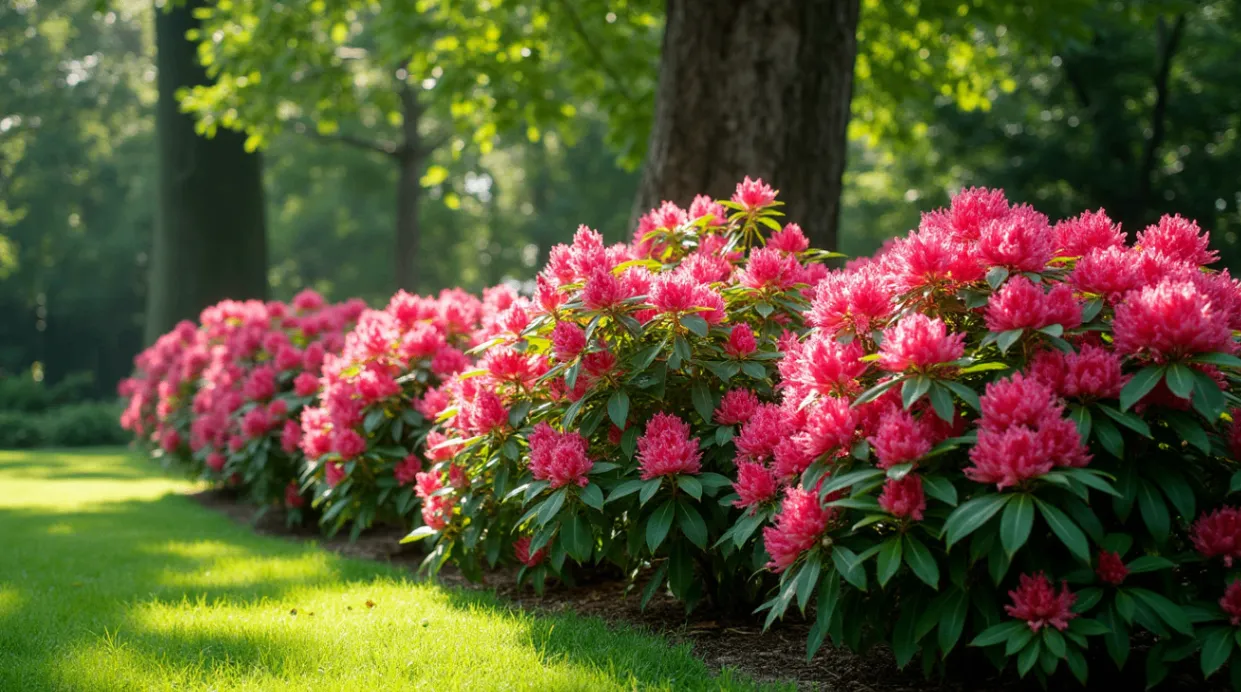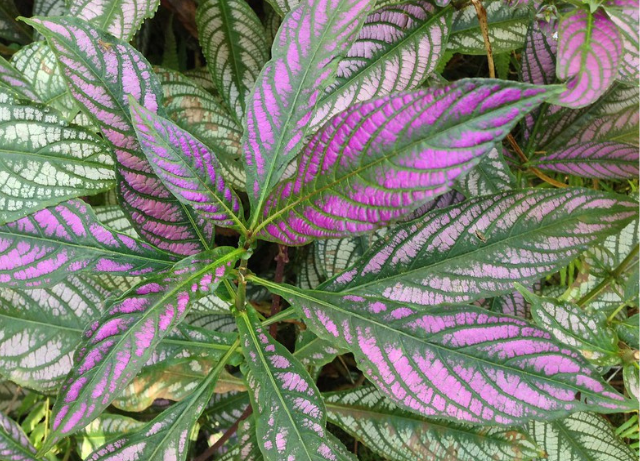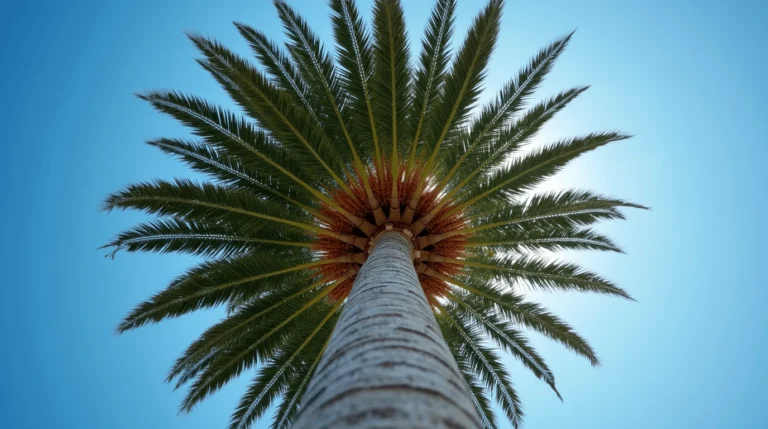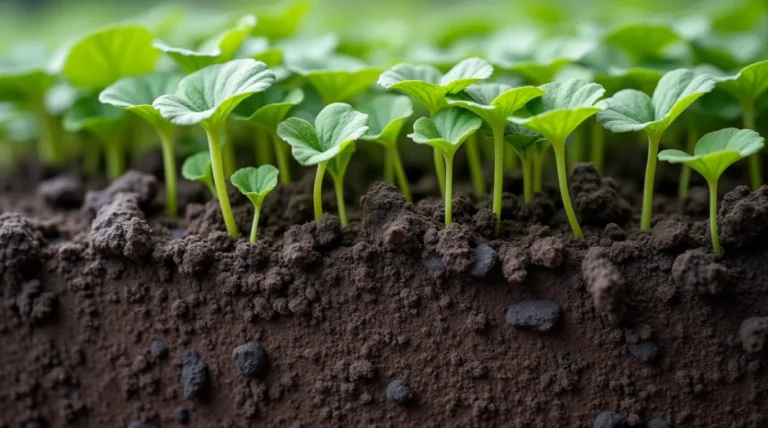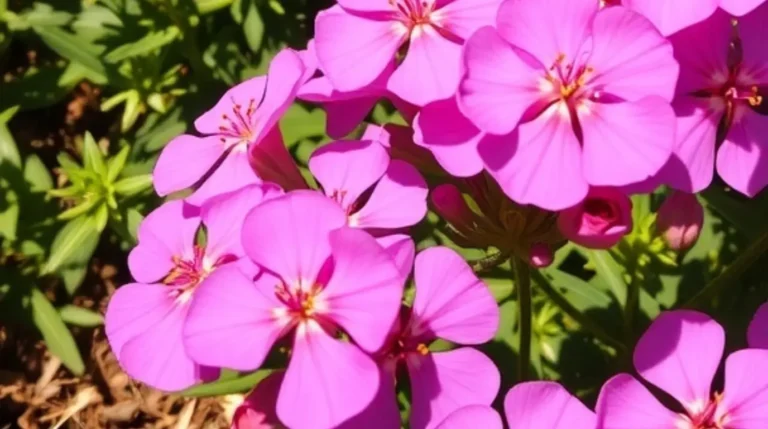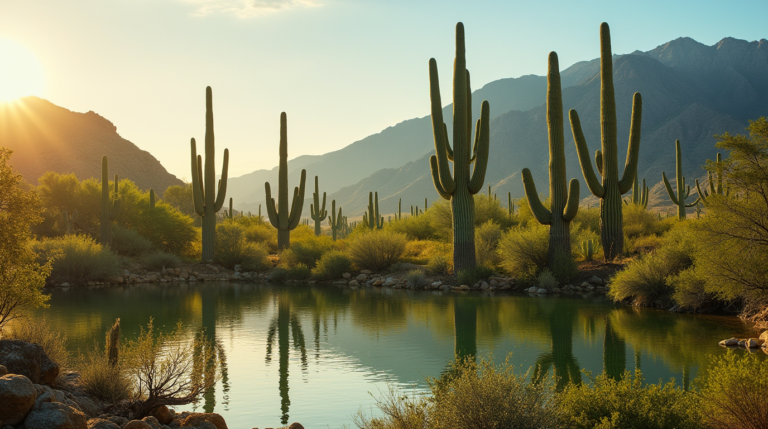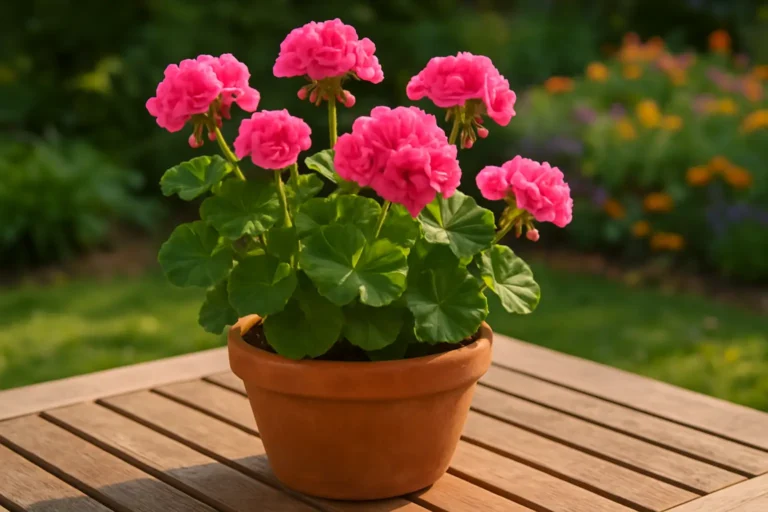Rhododendron Care: How to Keep Your Blooms Vibrant
Rhododendron care is key to keeping your blooms bright. With the right care, these plants can add beauty to your garden. It’s all about understanding what they need and giving them the best conditions.
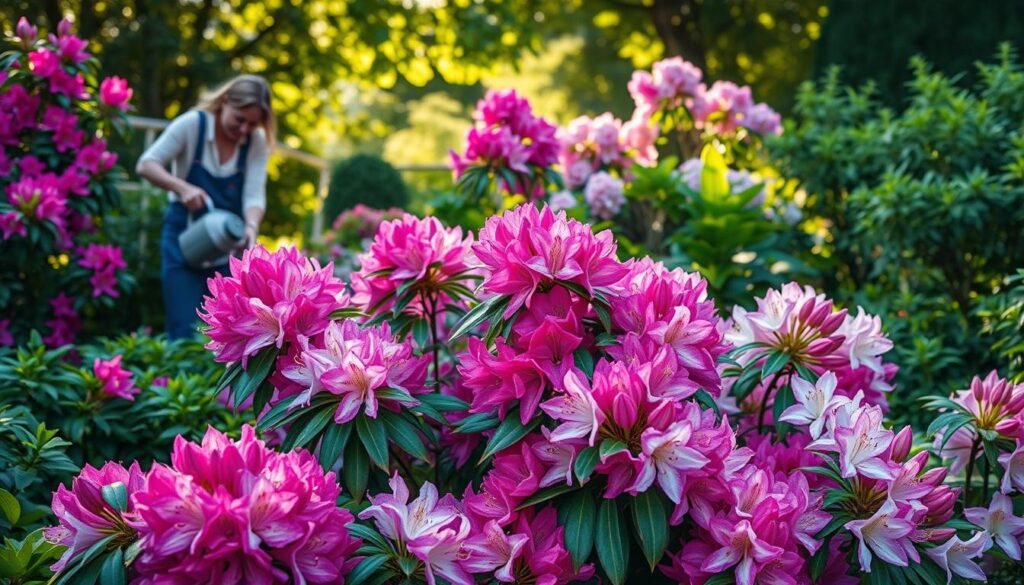
While rhododendron care is simple, it does need some focus. By following the right steps, you can keep your blooms looking great. Taking good care of your rhododendrons is important for their health and life span.
Key Takeaways
- Proper rhododendron care is necessary for vibrant blooms
- Rhododendron care involves understanding the plant’s needs
- Providing the right conditions is crucial for the plant’s well-being
- Rhododendron care requires attention to detail
- Following the right guidelines can keep your rhododendron blooms healthy
- Rhododendron care is essential for the plant’s longevity
Understanding Your Rhododendron Plant
Starting with rhododendron care means knowing your plant’s unique traits. There are many rhododendron varieties, each with its own growth patterns and life cycles. To care for it best, mimic its natural habitat and growing conditions in your garden.
To replicate your rhododendron’s natural habitat, think about soil, climate, and sunlight. Different rhododendron varieties do well in different places. Knowing your plant’s growth patterns helps you meet its needs all year.
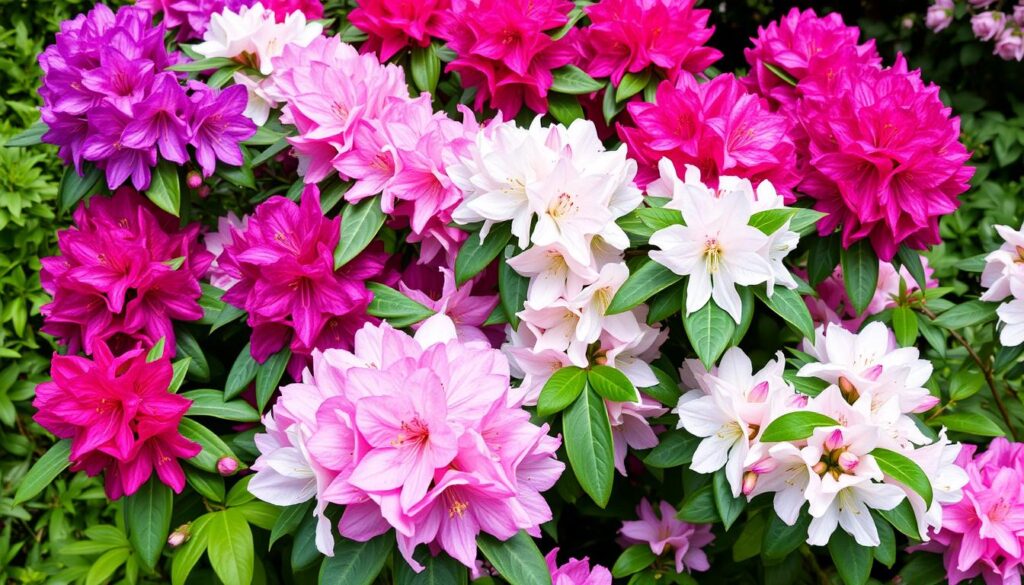
- Soil acidity and nutrient levels
- Climate and temperature changes
- Sunlight and shade needs
- Watering and drainage
By considering these, you can make a great environment for your rhododendron to grow and bloom.
Choosing the Perfect Location for Your Shrub
When picking a spot for your rhododendron, rhododendron location is key for its health and blooms. Rhododendrons love well-drained soil and partial shade, especially in warm places. Think about the sunlight your garden gets and when it hits.
A good shrub placement is vital for your rhododendron’s growth. Here are important things to think about when picking the best spot:
- Soil quality and drainage
- Amount of sunlight and shade
- Proximity to other plants and trees
- Protection from extreme weather conditions
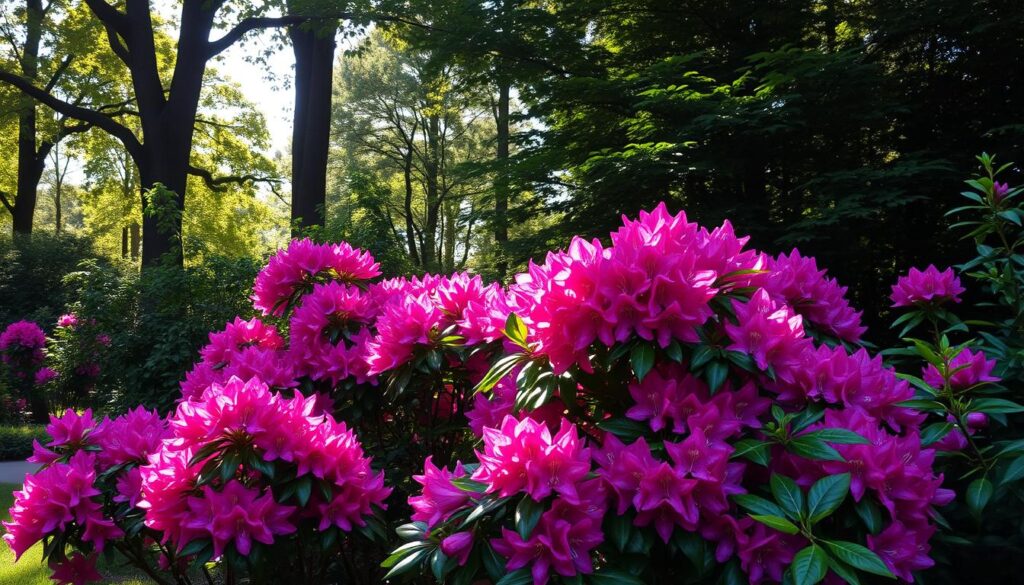
By carefully looking at these points and picking the right rhododendron location, you can help your shrub grow well and bloom brightly. Make sure to think about what your rhododendron needs and pick a spot that fits those needs. With the right shrub placement and care, your rhododendron will be a beautiful part of your garden.
Rhododendrons are not just beautiful plants, but they also need careful thought when placing them in the garden. By choosing the right spot, you can make sure your shrub gets the right sunlight, water, and nutrients to do well.
Soil Requirements and Preparation
For rhododendrons to grow well, the right soil is key. The soil should be slightly acidic to acidic, with a pH of 5.5 to 6.5. This pH helps rhododendrons get the nutrients they need to thrive.
To get the right pH, you need to amend the soil. Adding peat moss, compost, or well-rotted manure can help. These materials not only adjust the pH but also make the soil better for plants. The exact amount needed depends on your soil’s type and current pH.
Ideal Soil pH Levels
The best pH for rhododendrons is between 5.5 and 6.5. If the pH is too high or too low, the plants may not get enough nutrients. For example, a pH above 7 can cause iron deficiency, while a pH below 5.5 can lead to aluminum toxicity.
Soil Amendment Techniques
Improving the soil involves adding organic matter. This can include:
- Adding peat moss or compost to lower the pH and improve structure
- Using well-rotted manure to add nutrients and improve fertility
- Incorporating elemental sulfur to lower the pH
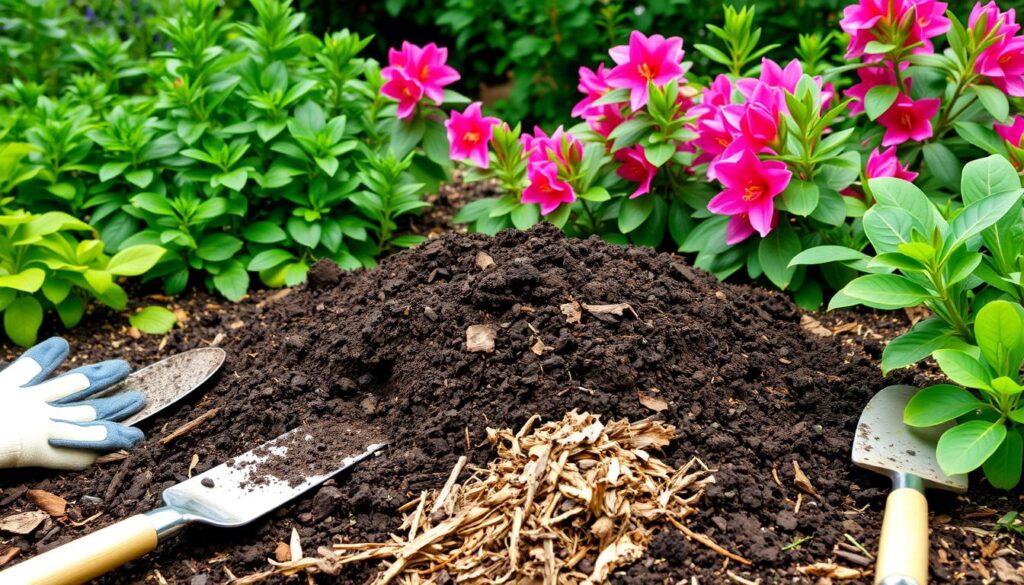
Drainage Considerations
Rhododendrons prefer well-draining soil. The soil should have a mix of sand, silt, and clay. If your soil is heavy clay or tends to waterlog, adding organic matter can help.
| Soil Type | pH Level | Drainage |
|---|---|---|
| Sandy Loam | 5.5-6.5 | Good |
| Clay Loam | 5.5-6.5 | Fair |
| Peat Moss | 4.5-5.5 | Excellent |
Essential Planting Guidelines
When planting rhododendrons, it’s important to follow the right steps. Start by picking a healthy plant with green leaves and strong stems. Plant at the best time, which is usually in spring or fall when it’s cooler.
Knowing the guidelines for planting rhododendrons is key. This means preparing the soil, digging the right hole size, and planting at the correct depth. Here are some important tips to remember:
- Plant your rhododendron in a spot with well-draining soil and partial shade.
- Water your plant often, but avoid overwatering.
- Fertilize your rhododendron regularly to encourage growth and blooms.
By following these guidelines for rhododendron planting, you can help your plant grow well. Remember, rhododendrons take time to settle and bloom. With proper care, your rhododendron will add beauty and life to your garden.
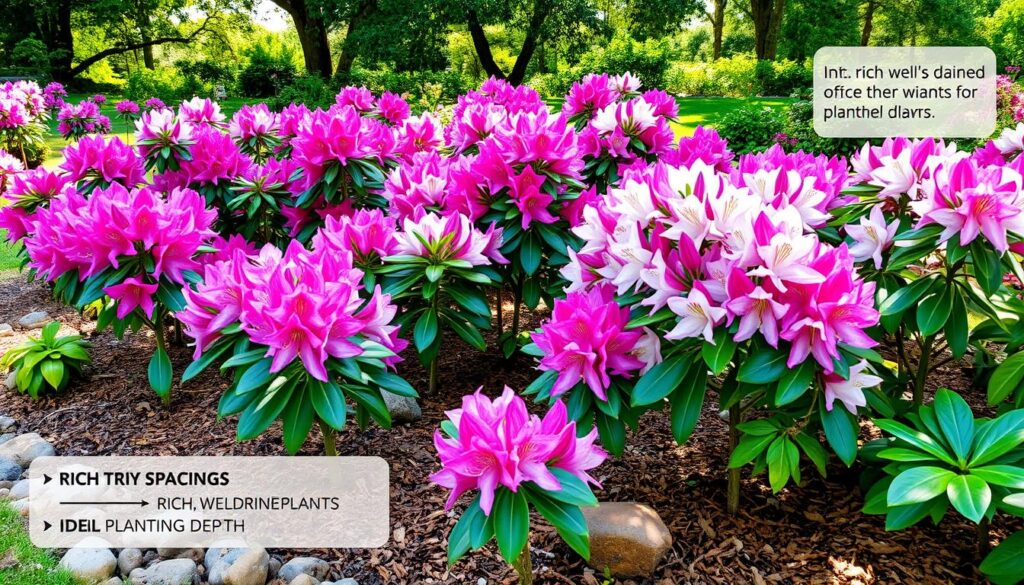
| Planting Time | Soil Requirements | Watering Needs |
|---|---|---|
| Spring or Fall | Well-draining soil with a pH between 5.5 and 6.5 | Regular watering, but not overwatering |
Watering Your Rhododendron Properly
Watering is key for rhododendrons to grow well. They need steady moisture. But, too much water can harm them. Knowing when to water and how to spot problems is crucial.
How often to water depends on the climate, soil, and the plant’s age. Generally, they need 1-2 inches of water weekly. This can come from rain or a hose. The method you use to water affects how much the plant drinks.
Watering Frequency
To find out when to water, check the soil. Stick your finger in it up to the knuckle. If it’s dry, it’s time to water. A moisture meter can also help.
Signs of Over and Under-Watering
Knowing the signs of too much or too little water is important. Too much can turn leaves yellow and cause root rot. Too little can make leaves wilt and stunt growth.
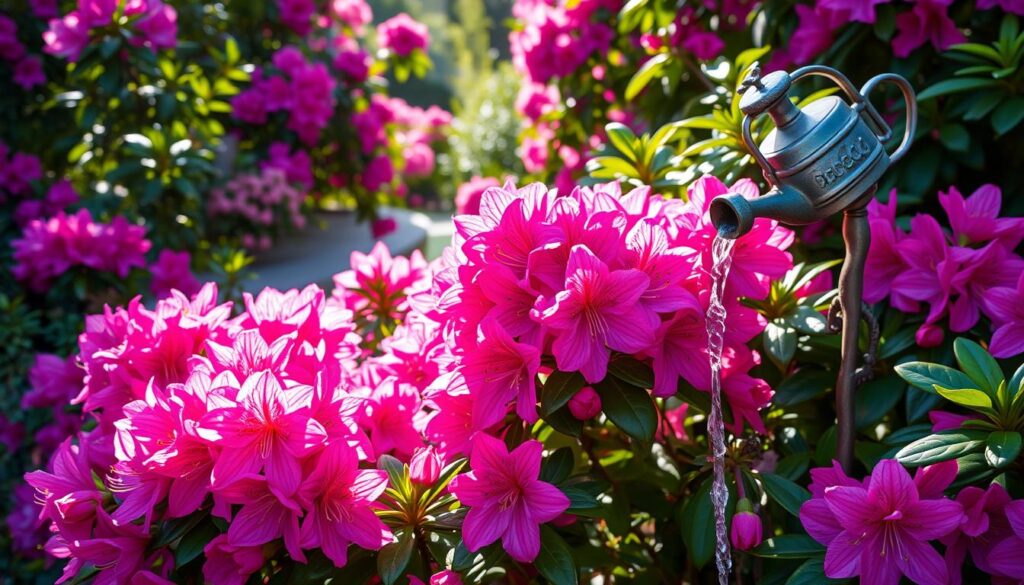
Irrigation Methods
There are many ways to water your rhododendron. You can use soaker hoses, drip irrigation, or sprinklers. Pick a method that waters the roots directly. This cuts down on water lost to evaporation and runoff.
By following these tips, you can keep your rhododendron healthy. This will help it bloom beautifully for many years.
Fertilization and Nutrient Management
Rhododendron fertilization is key to their care. Proper nutrients boost their health and blooms. Knowing what your rhododendron needs is crucial.
Choosing the right fertilizer is vital. A balanced, water-soluble one is best. Apply it in late winter or early spring for the best results.
Here are some key considerations for rhododendron fertilization and nutrient management:
- Soil pH: Rhododendrons prefer slightly acidic soil, with a pH between 5.5 and 6.5.
- Nutrient balance: A balanced fertilizer should contain equal amounts of nitrogen, phosphorus, and potassium.
- Fertilization frequency: Fertilize your rhododendron every 2-3 weeks during the growing season.
By following these guidelines, you can give your rhododendron the nutrients it needs. This ensures it grows well and blooms beautifully.
| Fertilizer Type | Nutrient Content | Application Frequency |
|---|---|---|
| Balanced, water-soluble fertilizer | Equal amounts of nitrogen, phosphorus, and potassium | Every 2-3 weeks during the growing season |
Pruning Techniques and Timing
Pruning is key for rhododendrons. It keeps the plant looking good, growing well, and blooming. Knowing the best rhododendron pruning methods and when to do it is vital.
You’ll need the right tools for pruning. This includes sharp pruning shears, loppers, and a saw. A seasonal pruning guide will tell you when to prune. This is usually after the plant has stopped blooming.
Tools Needed for Pruning
- Pruning shears
- Loppers
- Pruning saw
Seasonal Pruning Guide
When to prune rhododendrons depends on their growth cycle. Prune after they’ve stopped blooming. This avoids harming new growth.
Rejuvenation Pruning Methods
Rejuvenation pruning cuts the plant back to the ground. It lets the plant regrow and bloom again. But, use this method carefully. It can stress the plant.
| Pruning Method | Description |
|---|---|
| Light Pruning | Removing dead or damaged branches |
| Rejuvenation Pruning | Cutting the plant back to the ground |
Protection During Extreme Weather
Protecting rhododendrons from extreme weather is key. This includes frost, heatwaves, and strong winds. These conditions can harm the plant, affecting its growth and survival.
To keep your rhododendron safe, take preventive steps. This will help protect it from extreme weather.
Here are some tips for protecting your rhododendron:
- Provide shade during heatwaves to prevent leaf scorching.
- Use frost blankets or covers to shield the plant from frost.
- Secure the plant with stakes or ties to prevent wind damage.
Understanding your rhododendron’s needs is crucial. Taking proactive steps to protect it from extreme weather ensures its survival and growth. By following these tips, you can safeguard your plant against harsh weather.
Remember, different rhododendrons have varying tolerance to extreme weather. Researching your plant’s specific needs helps ensure its health and well-being, even in extreme weather.
Common Pests and Disease Management
Rhododendron plants face many pests and diseases. These can harm their health and look. To keep them healthy, it’s key to manage diseases well. Common pests like aphids, whiteflies, and spider mites can be fought with natural treatments like neem oil and insecticidal soap.
To stop pests and diseases, keep things clean. Remove sick leaves and throw them away. Watch your plant closely to catch problems early. Here are some ways to manage diseases:
- Give the plant good air to breathe
- Water it right to avoid root rot
- Use fungicides when needed to fight fungal infections
Using natural treatments is also good. For example, ladybugs and lacewings can help with aphids. By being proactive and using natural treatments, your rhododendron will stay healthy and look great.
Follow these tips to enjoy your rhododendron’s beauty while keeping it healthy. Always watch your plant and act fast if you see pests or diseases. Use natural treatments to keep your plant and environment balanced.
| Pest/Disease | Symptoms | Treatment |
|---|---|---|
| Aphids | Curled or distorted leaves | Neem oil, insecticidal soap |
| Root Rot | Yellowing leaves, soft stems | Improve air circulation, reduce watering |
| Fungal Infections | Black spots, powdery patches | Fungicides, remove infected leaves |
Seasonal Care Requirements
Understanding your rhododendron’s needs through the year is key. This means changing how you water, fertilize, and prune it with the seasons. For example, in spring, they need more water and food to grow well and bloom.
In summer, give your rhododendron plenty of shade and water to avoid damage. In fall, cut back on watering and fertilizing to get it ready for winter. During winter, protect it from cold winds and frost with mulch and keep potted plants indoors.
- Watering: Adjust watering schedules according to the season, taking into account weather conditions and soil moisture.
- Fertilizing: Apply fertilizer during the growing season (spring and summer) to promote healthy growth and blooming.
- Pruning: Prune your rhododendron after it finishes blooming to maintain shape and promote new growth.
By following these rhododendron seasonal care requirements, you’ll help your plant thrive all year. Be ready to adjust your care as the weather and your plant’s needs change.
| Season | Watering | Fertilizing | Pruning |
|---|---|---|---|
| Spring | Increased watering | Fertilize regularly | Prune after blooming |
| Summer | Adequate watering | Continue fertilizing | Minimal pruning |
| Fall | Reduced watering | Stop fertilizing | Prepare for winter |
| Winter | Minimal watering | No fertilizing | Protect from harsh weather |
Propagation Methods for Rhododendrons
Propagating rhododendrons is a fun way to share plants or grow your garden. You can use layering, cuttings, or seeds to do this. Each method needs patience and care, but with the right steps, you can grow your rhododendron.
Understanding the different ways to propagate rhododendrons is key. Layering is a favorite method. It involves bending a stem to the ground and holding it with a rock or wire. This works well for plants with long stems, as it lets them grow roots while still connected to the main plant.
Layering Technique
- Choose a healthy stem with at least two nodes
- Bend the stem to the ground and secure it with a rock or a U-shaped wire
- Keep the soil consistently moist and provide indirect sunlight
Growing from Cuttings
Another common way to propagate rhododendrons is through cuttings. This method takes a piece from a healthy stem and roots it in a pot.
To grow from cuttings, you need the right conditions. This means keeping the soil wet, giving it indirect light, and keeping it warm. With these conditions, you can successfully grow your rhododendron from cuttings.
Companion Planting Guide
Creating a thriving garden starts with a good companion planting guide for rhododendrons. The right plants can boost your rhododendron’s health and keep pests away. They also attract pollinators.
Some plants are great for rhododendrons. For example, marigolds and nasturtiums keep nematodes and whiteflies off. Lavender and rosemary draw in pollinators and improve air flow, which fights disease.
- Marigolds: repel nematodes and whiteflies
- Nasturtiums: repel aphids, whiteflies, and other pests
- Lavender: attracts pollinators and improves air circulation
- Rosemary: attracts pollinators and improves air circulation
By using a rhododendron companion planting guide, you can make a garden that’s full of life. Pick plants that match your rhododendron’s needs. Try different plants to see what works best for your garden.
With the right plants, your rhododendron will be healthier and your garden more stunning. So, why not try rhododendron companion planting and see the difference for yourself?
| Companion Plant | Benefits |
|---|---|
| Marigolds | Repels nematodes and whiteflies |
| Nasturtiums | Repels aphids, whiteflies, and other pests |
| Lavender | Attracts pollinators and improves air circulation |
| Rosemary | Attracts pollinators and improves air circulation |
Troubleshooting Growth Issues
When dealing with rhododendron growth issues, finding the solution is crucial. These problems can stem from various sources like watering, fertilizing, pests, and diseases. It’s important to watch your plant closely and act fast to fix the issue.
Common problems include yellow leaves, droopy branches, and poor blooms. You can solve these by adjusting how you water and fertilize, pruning, and protecting against pests and diseases. By being proactive, you can avoid bigger issues and keep your rhododendron healthy.
Here are some tips for troubleshooting common rhododendron growth issues:
- Check your plant’s watering schedule to ensure it’s receiving the right amount of moisture
- Modify your fertilization routine to supply essential nutrients for optimal growth.
- Inspect your plant regularly for signs of pests or diseases and take action promptly if you notice any issues
- Prune your plant regularly to promote healthy growth and prevent overgrowth
By following these tips and being proactive, you can ensure your rhododendron stays healthy. Always keep an eye on your plant to catch any problems early.
| Common Rhododendron Growth Issues | Cause | Solution |
|---|---|---|
| Yellowing leaves | Overwatering or underwatering | Adjust watering schedule |
| Droopy branches | Lack of fertilization or pruning | Fertilize and prune regularly |
| Poor blooming | Insufficient light or nutrients | Provide sufficient light and nutrients |
Conclusion
Our journey through rhododendron care shows these plants need careful attention to thrive. By knowing their needs and providing the right conditions, you can create a stunning garden. This garden will amaze everyone and bring joy to your outdoor space.
Success in growing rhododendrons comes from paying attention, being patient, and loving these plants. This guide has given you the tools to become a rhododendron expert. You can now nurture your plants and add beauty to your landscape.
Take on the challenge, try different varieties, and be proud of your healthy rhododendrons. Seeing their beauty every year will make all your effort worth it. Happy gardening!
FAQ
What are the different varieties of rhododendrons?
Rhododendrons come in many types. Each has its own look, growth, and life cycle. You’ll find evergreen, deciduous, dwarf, and large-leafed varieties.
What are the ideal growing conditions for rhododendrons?
Rhododendrons love well-drained, acidic soil. They prefer partial shade, especially in warm places. They need regular water but can’t handle too much.
How do I properly plant a rhododendron?
Choose a healthy rhododendron and plant it in spring or fall. Make the hole twice as wide as the root ball. Plant it at the same depth as in the container.
How often should I water my rhododendron?
Keep your rhododendron moist, especially when it’s growing new leaves or buds. Water it often, but don’t let the soil get too wet. Watch for signs of too little or too much water.
What type of fertilizer should I use for my rhododendron?
Use an acidic, balanced fertilizer that’s low in nitrogen. Apply it in early spring. Follow the instructions to help your rhododendron grow and bloom.
When and how should I prune my rhododendron?
Prune in late winter or early spring before new growth. Use sharp tools and remove dead, damaged, or crossing branches. Don’t prune in the summer.
How can I protect my rhododendron from extreme weather conditions?
To protect from frost, heat, or wind, wrap the plant with burlap or horticultural fabric. Provide shade in the hottest times. Mulch around the base to keep the roots warm.
How can I propagate my rhododendron?
You can propagate rhododendrons by layering, taking cuttings, or growing from seed. Layering is a popular method. It involves burying a branch to root it before separating it from the parent plant.
What plants make good companions for rhododendrons?
Azaleas, mountain laurel, ferns, and hellebores are great with rhododendrons. They like the same acidic soil and add beauty to your garden.
How can I troubleshoot growth issues with my rhododendron?
If your rhododendron isn’t growing well, check the soil, water, and nutrients. Fix any problems with pests, diseases, or the environment to help your plant thrive.

